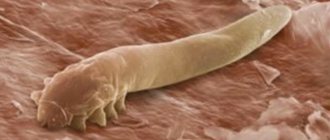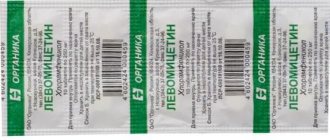Crooked septum
One of the most common malfunctions of the nose is a deviated septum. It’s difficult to call it a formation, but at the same time it can stick out so much that it becomes like him. There are situations when a person thinks that something has grown in his nose, and this is just a curvature.
There are many options for exactly how a septum can be bent: from simple, accompanied by an asymptomatic course, to complex. It often happens that curvature is a consequence of a hereditary factor. According to the type of curvature, each case is different from the others. There are options with a curvature by an arc - like a rocker - in one or the other side of the nasal cavity, there is a violation only in the cartilaginous or bone part, and sometimes in both at the same time. Sometimes the septum is curved like the letter S of the English alphabet; there are situations when it actually represents a wave protruding in a certain area, and it can also have a spike that will resemble a needle.
Also, deviated septum can be acquired after any injury. For example, a child can easily get hit on the nose in kindergarten, and parents won’t even know about it; teenagers get injured in sports clubs and on the streets. In adults, the problem can arise from injuries at construction sites, in fights, etc.
The nose is in danger. 9 mistakes that prevent us from curing a runny nose Read more
What are the consequences?
This problem leads to impaired ventilation of the brain, poor-quality breathing and lack of oxygen develop. Against this background, migraine-like pain is not uncommon, and sometimes even neurological diagnoses develop.
In addition, snoring appears against the background of a deviated septum. This condition is called rhonchopathy. It is fraught with the appearance of night apnea, against the background of which heart attacks, strokes and early death develop quickly and easily. Also, a deviated septum causes the growth of the inferior nasal concha: this occurs in 95% of cases. Overgrowth is especially dangerous for the inferior nasal concha: a person begins to breathe worse. At the first stage of enlargement, a person does not even notice the problem, at the second he already has to resort to vasoconstrictor drops, the third stage of the development of pathology leads the person to a doctor, who most likely sends him to a hospital. Due to the growth of the sinuses, the closure of the anastomosis begins - the hole connecting the nasal sinus (maximum) and the nasal cavity. When the anastomosis is partially or completely blocked, sinus ventilation is disrupted. And this becomes the cause of the development of sinusitis.
Article on the topic
A blow to the bridge of the nose. What is ethmoiditis and why is it dangerous?
Nasopharyngeal cancer
With a tumor of the nasopharynx, the symptoms of the disease can be widespread and less common. Early manifestations of nasopharyngeal cancer are nasal congestion, a burning sensation in the throat, swollen lymph nodes, and ear congestion. The symptoms are similar to those of a cold. The tumor begins to progress rapidly and is manifested by the following symptoms: nosebleeds, hearing loss, sore throat, nasal congestion, frequent headaches, enlarged cervical lymph nodes, squint on one side, a feeling of numbness in the face, difficulty opening the mouth, non-healing in the nasopharynx. wounds.
Nasopharyngeal cancer is dangerous because the disease is asymptomatic in the early stages of development. Very often, the symptoms of cancer resemble the symptoms of colds. When oncology of the nasopharynx is detected, the symptoms most often indicate a late stage of cancer - an unpleasant putrid odor appears from the mouth, the patient feels an unpleasant odor that comes from the nasal sinuses, headaches are tormented, the vocal cords swell, the voice changes, the patient has difficulty swallowing, opening the mouth.
Nosebleeds are a constant concern, the body temperature periodically rises, tachycardia worries, speech becomes incoherent, strabismus and paralysis of the facial nerves may develop. Stage 4 nasopharyngeal cancer is characterized by general weakness, severe symptoms, severe pain in the nasopharynx, neck, and headaches.
Polypous growths
When the nose does not breathe well, for example, due to a chronic runny nose or the presence of a deviated septum, nasal polyps begin to form. Initially, these are benign formations, but it is worth understanding that they have a tendency to become malignant. This means that if a person finds out that he has a nasal polyp, he should not relax, he must consult a doctor and keep this formation under constant control. Yes, there is a decrease in the size of polyps, but in percentage terms the number of such cases is not particularly large.
Initially, polyps grow in the paranasal sinus from any cell of the temporal labyrinth: in the maxillary sinus, sphenoid sinus, frontal sinus, etc. And after some time, it falls through the anastomosis and enters the nasal cavity.
Polyps grow very actively in the heat, so those who have already been diagnosed with such formations should not lie in the open sun, especially scorching ones, such as in the south.
See a doctor immediately! When ear pain is a reason to see a specialist Read more
What are the consequences?
Polyps deteriorate the quality of life simply incredibly. Firstly, the nose does not breathe, secondly, due to the fact that the polyps constantly keep the mucous membrane in tension, inflammation develops, and thirdly, a lot of mucus constantly flows from the nose. In addition, against the background of the appearance of nasal polyps, a person develops the following side symptoms: headaches, the inability to work fully, and to think normally.
Treatment is usually surgical. But at the same time, the operations are palliative in nature, i.e., after removing the polyp, one cannot count on the fact that it will not appear again. It happens even the other way around: after removing the formation, there is a risk of even greater growth and the appearance of growths. Of course, they are removed anyway, because they have a risky oncological profile, but it is important to understand that you will need to pay a lot of attention to yourself.
A separate danger is the so-called bleeding polyp of the nasal septum. It is literally saturated with vessels. And it must be removed extremely carefully, because... You can get severe nosebleeds, which are extremely difficult to stop. Plus, it is located on the partition, so a person feels it and can pick it off with a simple cotton swab. But you can’t do this, because bleeding can begin, even leading to death. Here the person loses so much blood that the ambulance does not even have time to take him to the hospital.
Question answer
Why is it dangerous to sneeze with your mouth and nose closed?
When is surgery to remove a bulla in the nose performed?
Nasal bullae are not able to spontaneously decrease in size. The only way to eliminate the existing breathing disorder is to remove the bubble along with part of the changed shell. Indications for bulla resection are:
- persistent breathing difficulties caused by significant narrowing and deformation of the passages of the nasal cavity;
- chronic sinusitis that is not amenable to conservative therapy, if the dysfunction of the anastomosis of the paranasal sinuses is associated with bullous transformation of the concha;
- purulent inflammation of the nasal bulla;
- all forms of chronic rhinitis caused by constant irritation of the mucous membrane of the nasal cavity by bullous walls.
Removal of a bulla in the nose is carried out only if indicated. In all other cases, the doctor chooses a wait-and-see approach, assessing the dynamics of the size and condition of the concha bullosa.
Cyst
Another type of formation in the nose that makes breathing difficult is a cyst. As a rule, cysts form in the nasal cavity, less often in the sinuses. The reason is hypoventilation. The body requires oxygen, and for the nasal cavity it is absolutely necessary. With cysts, unlike polyps, it is somewhat simpler, because they do not have a tendency to become malignant. Finding them is not so easy. For example, they can be determined by chance in flight. When the plane accelerates, the pressure increases, including in the nose, and some kind of amber sticky liquid begins to flow from the nose by itself. This means that there was a cyst in the sinus, its cavity burst.
Cysts can also be a diagnostic finding. They are detected, for example, during an X-ray. A cyst differs from a polyp in that it has a spherical shape. The polyp often has a lumpy or elongated shape.
What are the consequences?
Despite the fact that cysts are more harmless than polyps, there is still no need to grow them in the sinuses. When the cyst presses on the mucous membrane, severe pain develops, and the head begins to ache where the cyst grows. If such a tumor has already appeared, doctors recommend surgery. And if it occupies half of the sinus, then the indication for surgical removal is already 100%.
The virus is omnipresent. Herpes is the cause of Alzheimer's disease, heart attack and stroke Read more
How is a nasal bulla removed?
In the classic version of the bulla resection operation, mechanical destruction of the walls of the vesicle and excision of the altered nasal concha using surgical instruments are performed. This uses a transnasal approach and requires general anesthesia.
After making an arcuate or contour incision along the edge of the modified concha and peeling off the mucous membrane along with the periosteum, the bulla is resection. The wound is covered with a flap of the mucous membrane, carefully removing excess tissue. Be sure to carry out a tight tamponade. This is necessary not only to prevent postoperative bleeding, but also to improve the survival of the mucous membrane. Relatively small nasal bullae are removed completely, while very large formations are partially resected. During the operation, they try to avoid damage to the mucous membrane of the upper part of the nasal cavity, which is necessary to preserve olfactory function.
This classic submucosal resection of the bullous turbinate is quite traumatic and the recovery period after it can take several weeks.
Herpes
Yes, herpes can also develop in the nose. At the same time, it is not so difficult to diagnose and does not have too terrible complications. A herpetic rash often appears in the vestibule of the nasal cavity, where there is still skin. Treatment of this infection today still remains a challenge. But there are also advantages: herpes appears against the background of an exacerbation and decrease in the body’s immune forces, but then it goes away on its own. You can treat it with an ointment based on acyclovir, and also take additional tablets based on the same substance to more quickly suppress the activity of the virus.
It is important to remember that you cannot pick anything in your nose yourself. After all, you yourself will not be able to determine what type of education you have. Therefore, it is necessary to undergo regular examinations with a doctor, including for preventive purposes, and all questions should be addressed exclusively to a specialist.
General definition
A nasal bulla is spoken of when a person has a pneumatized middle or (less commonly) superior turbinate.
In this case, a bubble is formed at its anterior end, which belongs to the system of air cells of the ethmoid bone. The walls of such a nasal bulla have a bone frame lined with mucous membrane. A secretion produced by glandular cells often accumulates inside the vesicle, which can fester. Other pathological changes in the mucous membrane of the bullous nucleus cannot be excluded. A nasal bulla may be a congenital anatomical feature; in this case, there may be other anomalies in the structure of the facial skeleton. Sometimes the formation and growth of a bubble on the nasal concha is caused by chronic ethmoiditis - a long-term inflammation of the mucous membrane of the ethmoid bone. This process leads to an increase in the volume of its cells and can be complicated by bullous transformation of the upper or middle concha.
Removal of a bulla at Dr. Korenchenko’s Clinic
See also Treatment of ENT diseases Removal of a nasal turbinate bulla
In Dr. Korenchenko’s clinic, preference is given to a modern, minimally invasive method of bulla removal. In this case, the manipulation to remove a bulla in the nose is carried out on an outpatient basis, under local anesthesia and under the control of an endoscope. The doctor has the ability to accurately control the depth and size of the incisions made using a surgical laser.
A properly performed operation does not lead to the formation of synechiae and allows you to restore nasal breathing as much as possible, and the use of high-tech equipment can significantly shorten the recovery period and improve the patient’s quality of life.
Experienced, certified and highly qualified specialists possess all the necessary skills and carry out manipulations in the most gentle way possible. Specialists at Dr. Korenchenko’s Clinic accept appointments by appointment, which can be done using the feedback form or by calling the phone numbers listed on the website.









